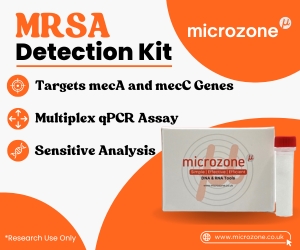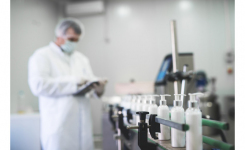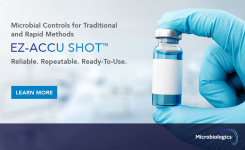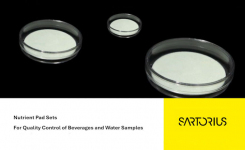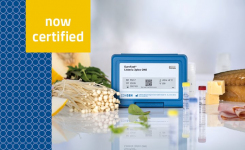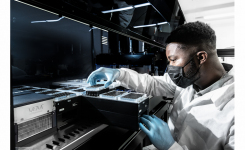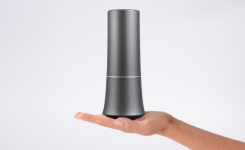∑-Swab™ - The Ideal M40-A Device?
go back to news archives| | The principal function of a transport swab is to maintain microorganisms in a viable and numerically stable condition. If some organisms die off too rapidly they will not be detectable at the laboratory, but it is also well understood that some bacteria have a tendency to overgrow, even in a well-defined transport medium without nutrients, giving a distorted representation of the relative populations in the original specimens. CLSI's M40-A standard recognises this problem. It requires that organism numbers should not drop by more than 3 logs during the maximum transport period specified by the manufacturer, whether transport is at ambient or refrigerated temperatures. It also requires that numbers should not increase by more than 1 log during the maximum transport period, but in this case this requirement only applies for transport at refrigerated temperatures. |
| In some ways this seems a pointless requirement since very few organisms are capable of multiplying at all at low temperatures, and even those which do, such as Listeria will do so relatively slowly. It seems to have been accepted that the overgrowth standard cannot be met at ambient temperatures, although those are the conditions in which many specimens have to be transported. Medical Wire's new ∑-Swab™ (Sigma Swab) is a dry swab without transport medium which meets the M40-A criteria for keeping bacterial numbers stable at ambient as well as refrigerated temperatures. Studies to be presented in the coming months will show that ∑-Swab™ will keep the numbers of many common organisms stable for 48 hours, neither increasing nor decreasing. These include many of the organisms present in wound infections such as Staphylococcus aureus, Pseudomonas aeruginosa, and Escherichia coli. Anaerobes such as Bacteroides fragilis have also been shown to survive in stable numbers for up to 48 hours. Even fastidious organisms will show some limited survival at 24 hours, although for these the assistance of a transport medium would still be recommended. The secret of ∑-Swab™'s performance is in the bud, which is made from a soft synthetic foam. Unlike conventional swabs with a tightly wound fibre bud, ∑-Swab™'s bud is an open-cell structure. The cells have a uniform icosahedral shape which makes the material highly absorbent, protecting the bacteria within their own micro-environment, yet allowing complete flow-through for reagents for optimum performance for both conventional laboratory procedures, and the many newer molecular methods. The ability to keep organism numbers stable means that ∑-Swab™ could be the ideal device for many routine specimens such as post-operative wounds, leg ulcers, and MRSA screening. Using a dry swab has a number of technical advantages. The specimen is not diluted into a transport medium, there are no non-viable bacteria from the medium to interfere with Gram-stains, and there is no overgrowth. There are also practical and environmental advantages. ∑-Swab™ has a five year shelf-life, since there is no medium to dry out. Tubed dry swabs are considerably less bulky for storage than the peel pouches required for transport swabs, and with less packaging to dispose of. ∑-Swab™ Duo is now also available in a labelled tube. ∑-Swab™ is the ideal specimen collection device for many routine applications, meeting M40-A criteria for survival for many common pathogens, and exceeding the criteria for overgrowth by keeping numbers stable at ambient temperatures. The inert open-celled bud allows improved reactions and sensitivities for conventional and molecular procedures. Extended shelf-life, and reduced packaging assist with stock management and environmental concerns. Reference 1. CLSI. Quality Control of Microbiological Transport Systems; Approved Standard, CLSI document M40-A [ISBN 1-56238-520-8]. |
NOTE: This item is from our 'historic' database and
may contain information which is not up to date.
Source : Medical Wire & Equipment Co View Company Information
Posted on March 19, 2009




